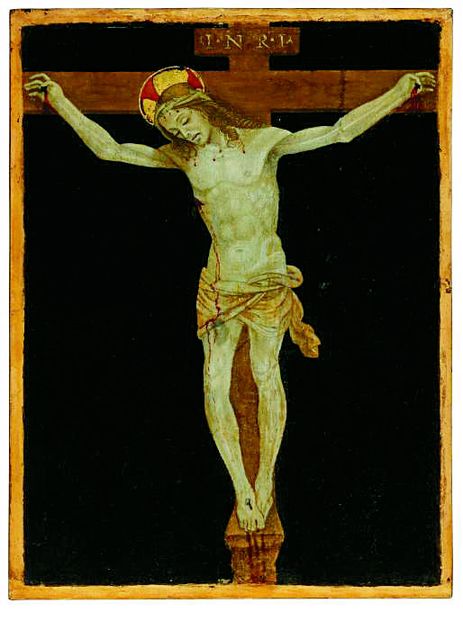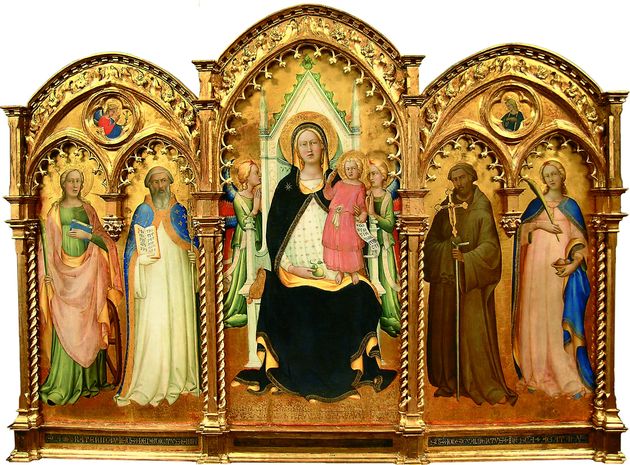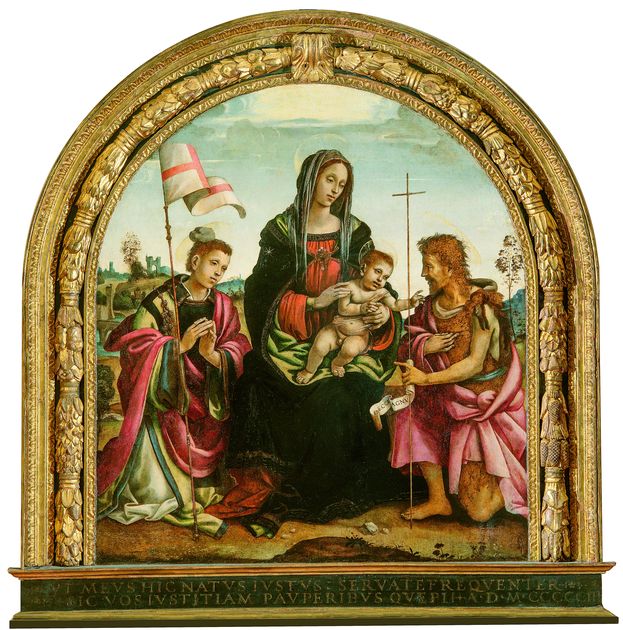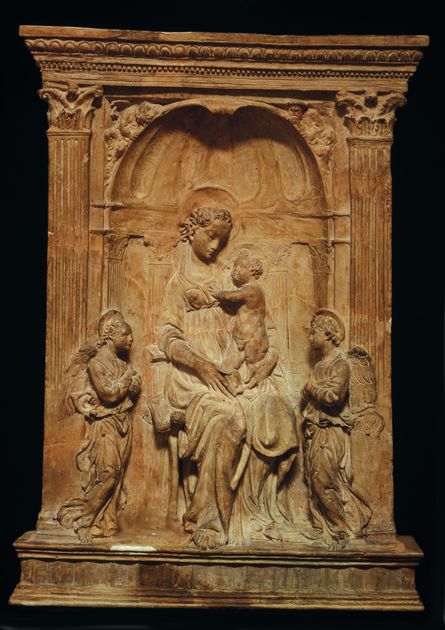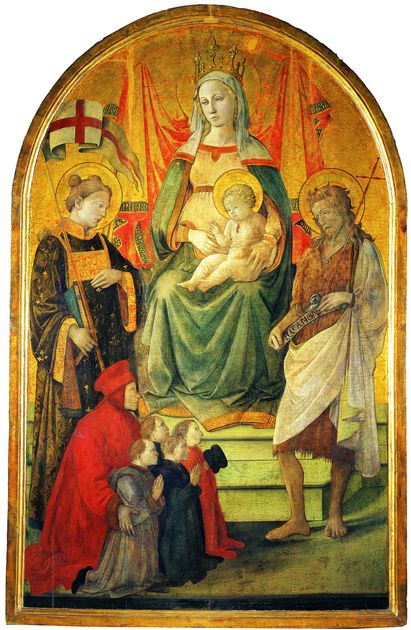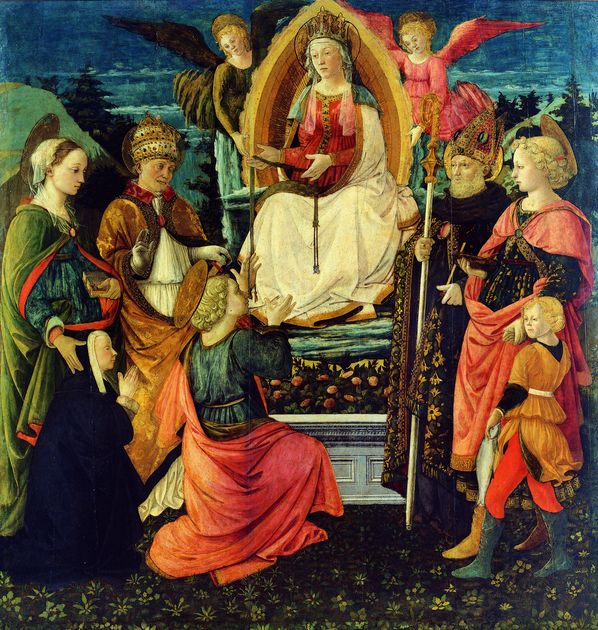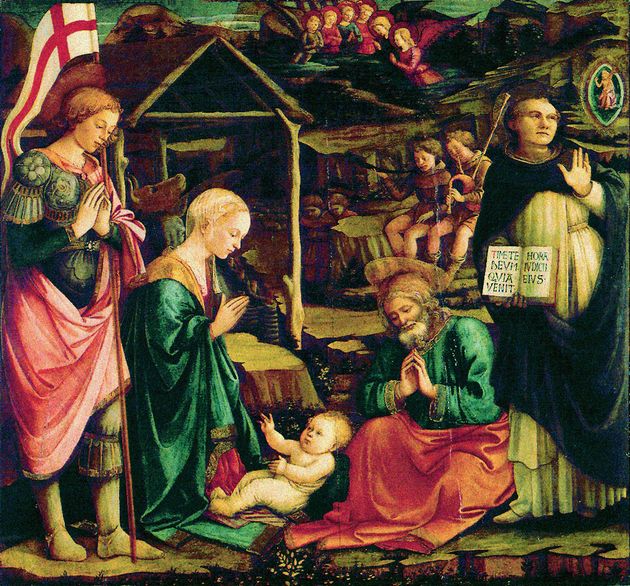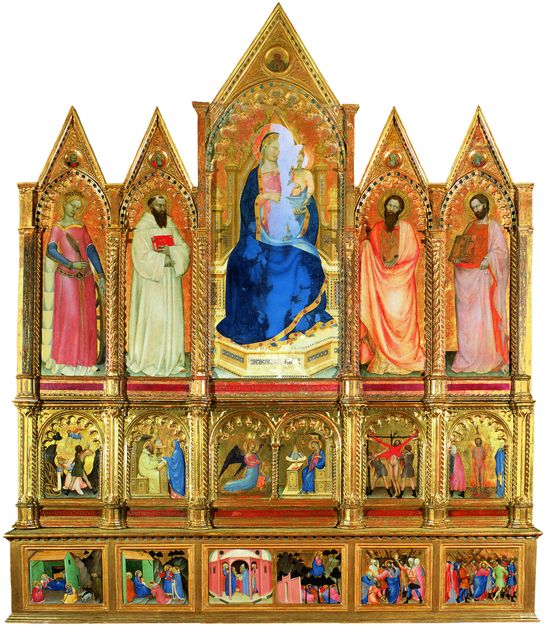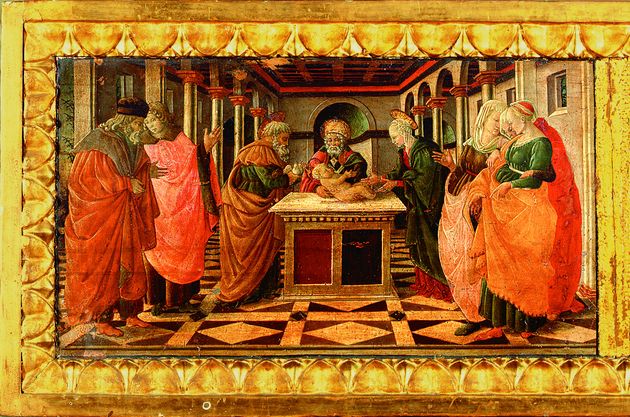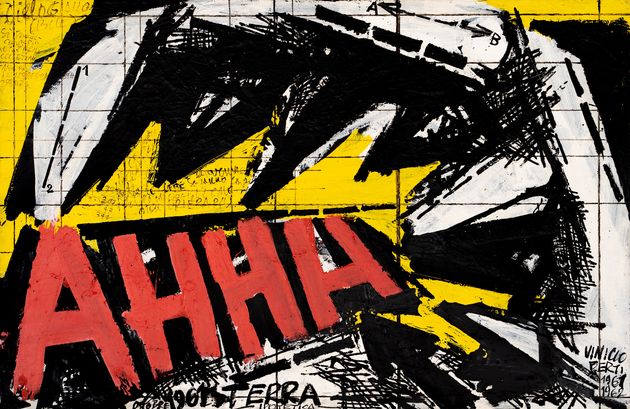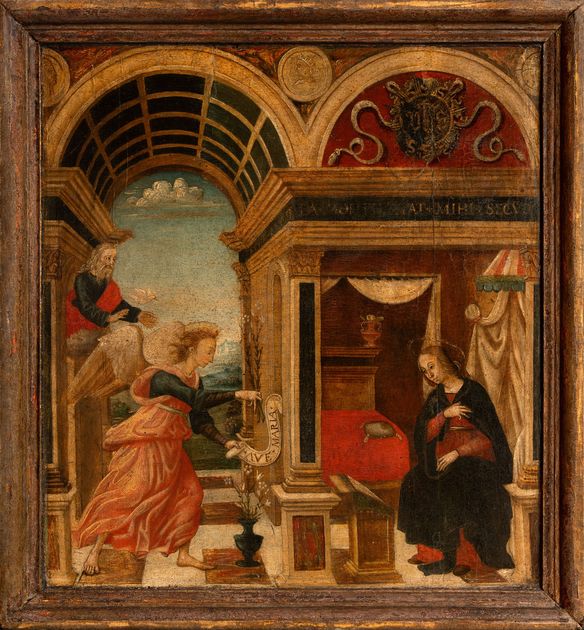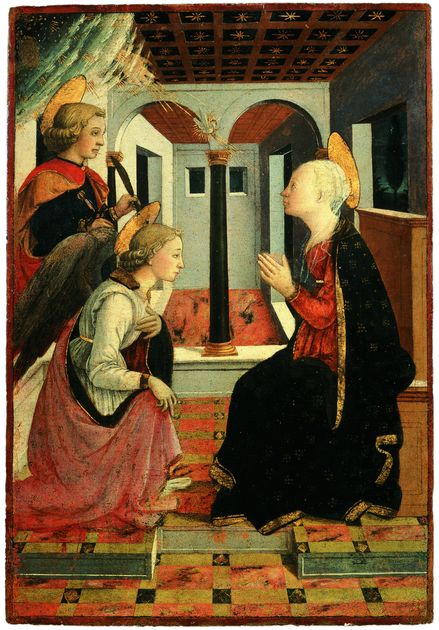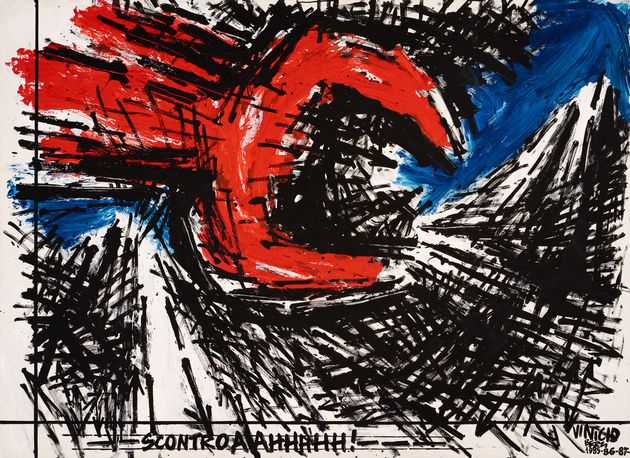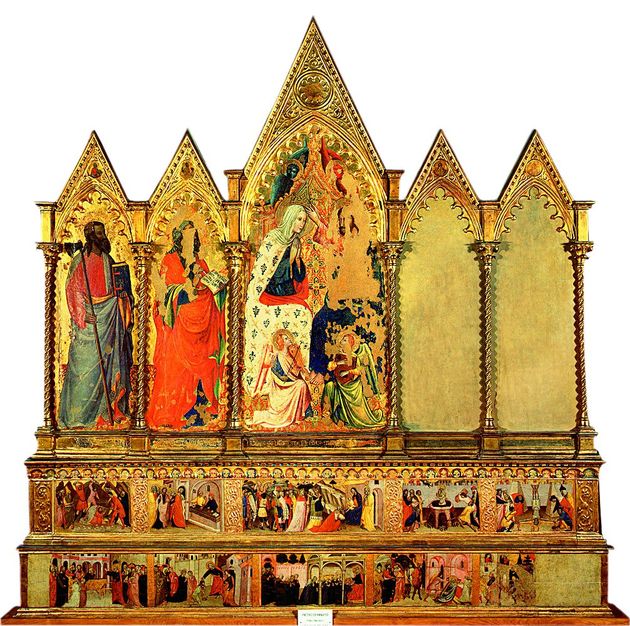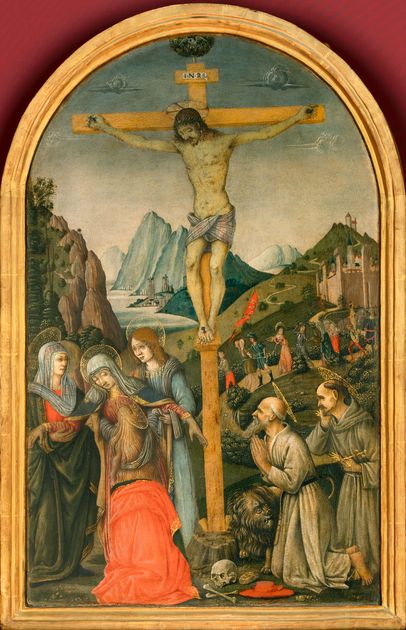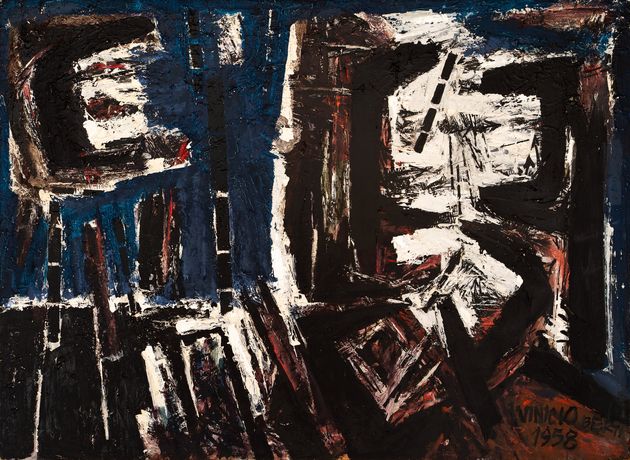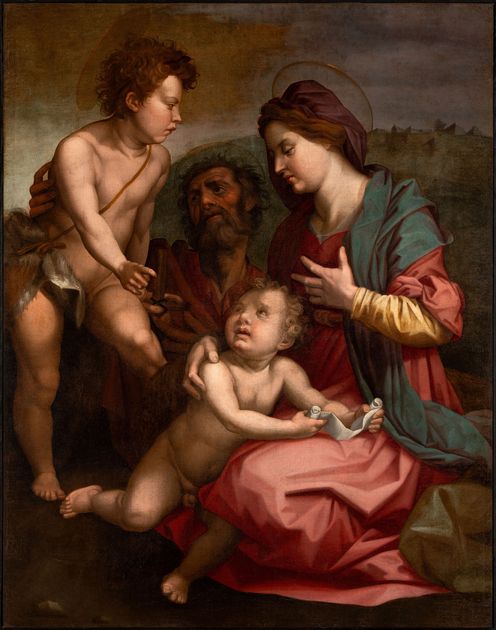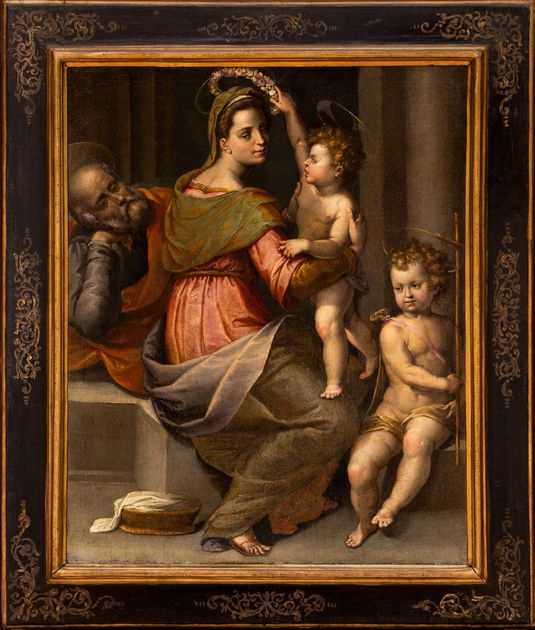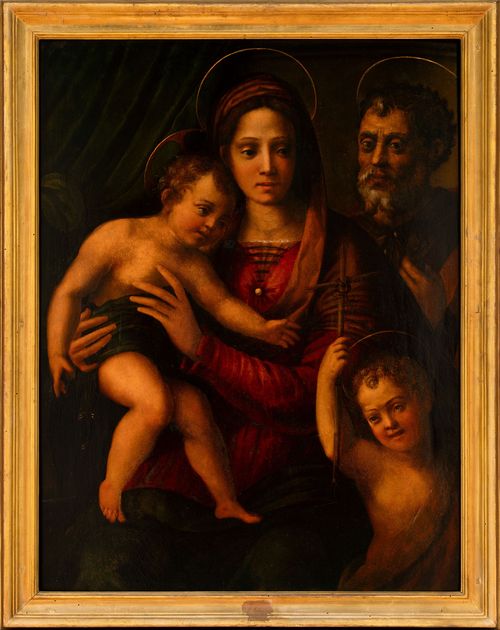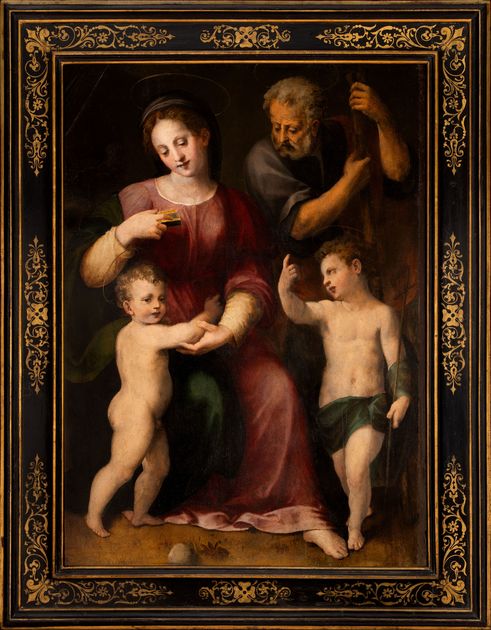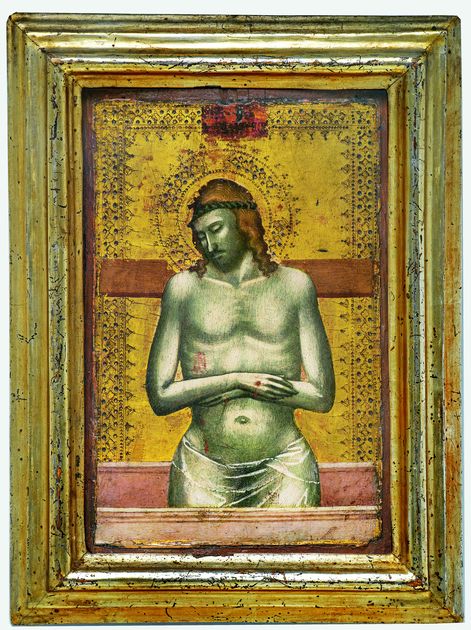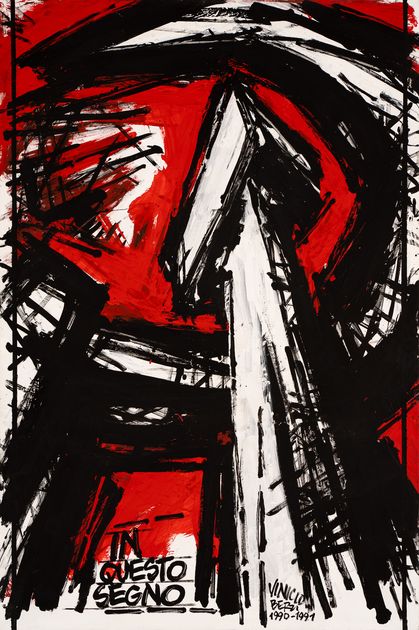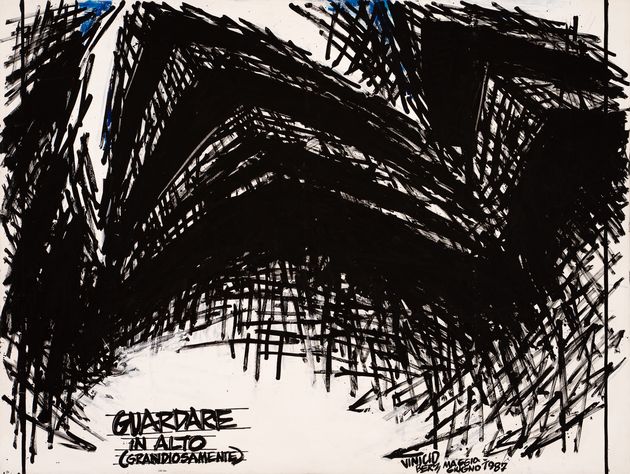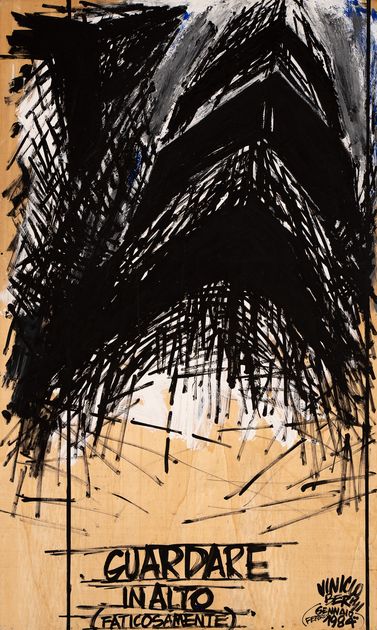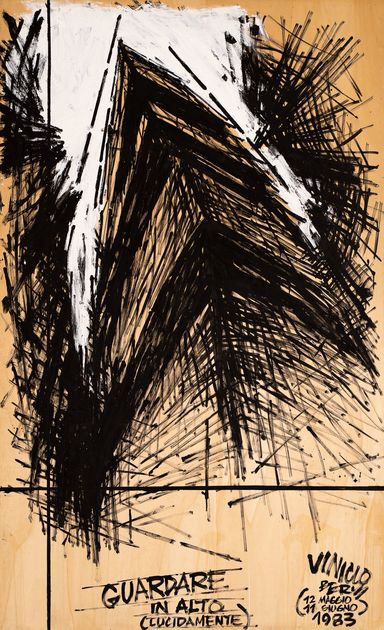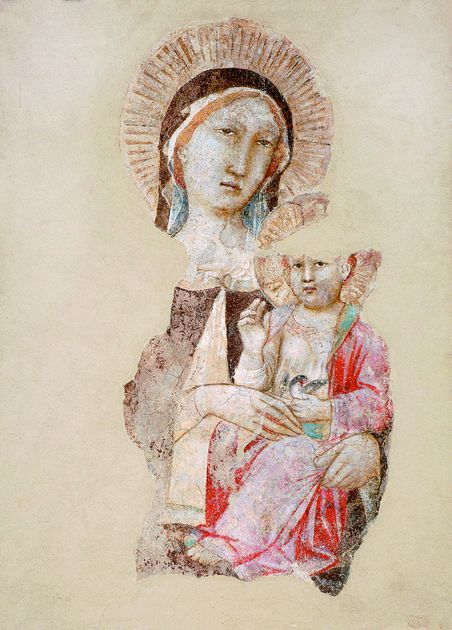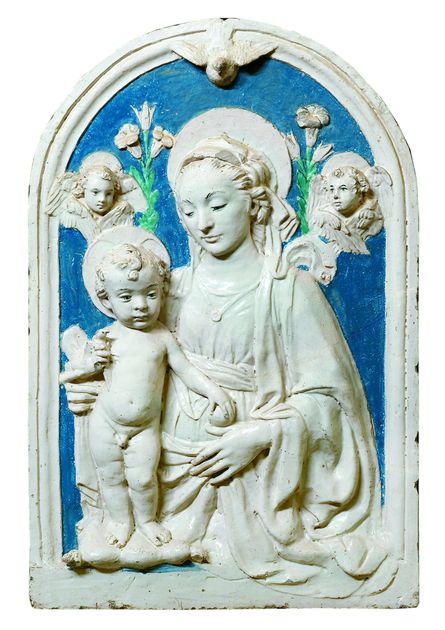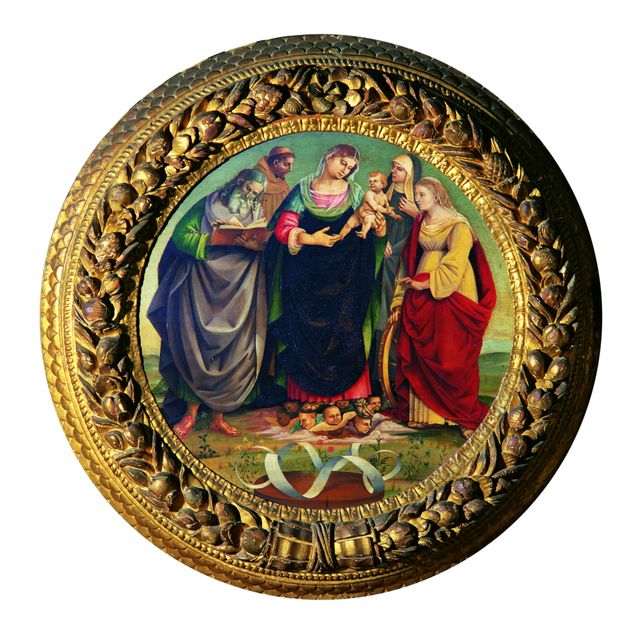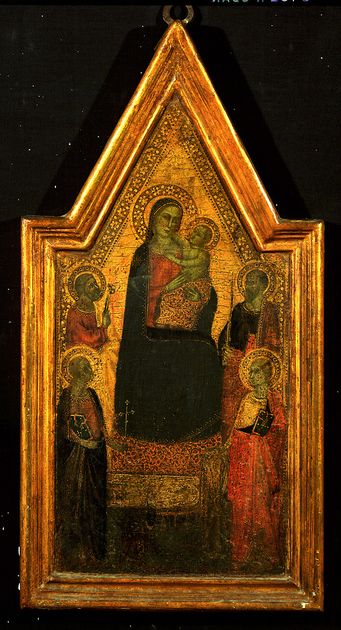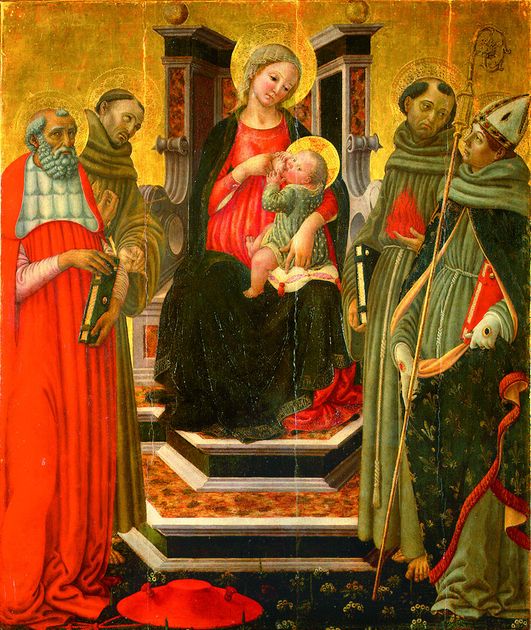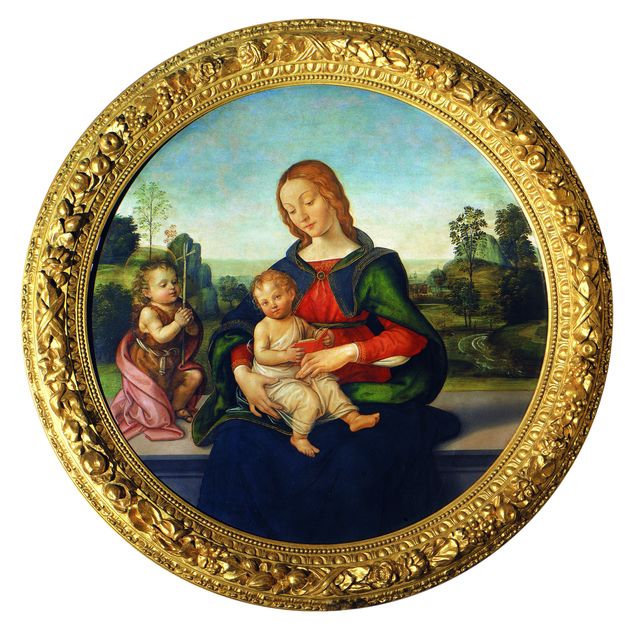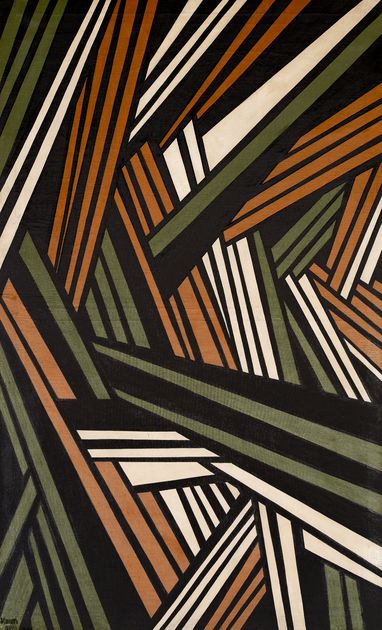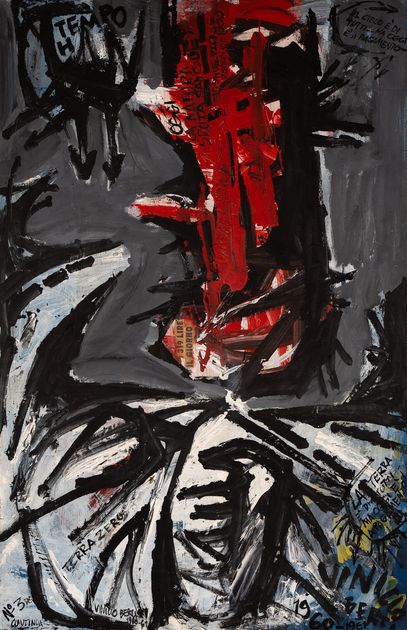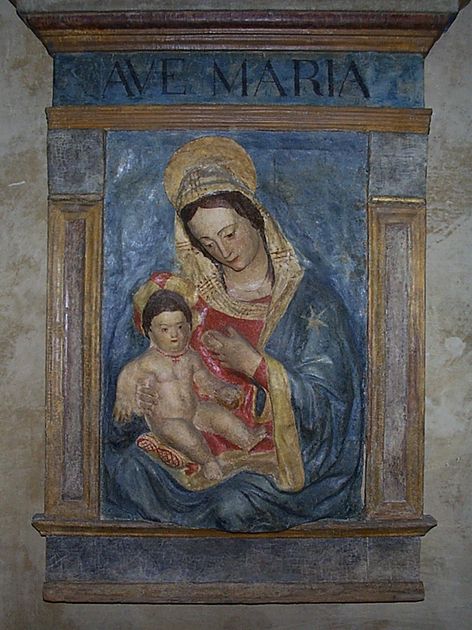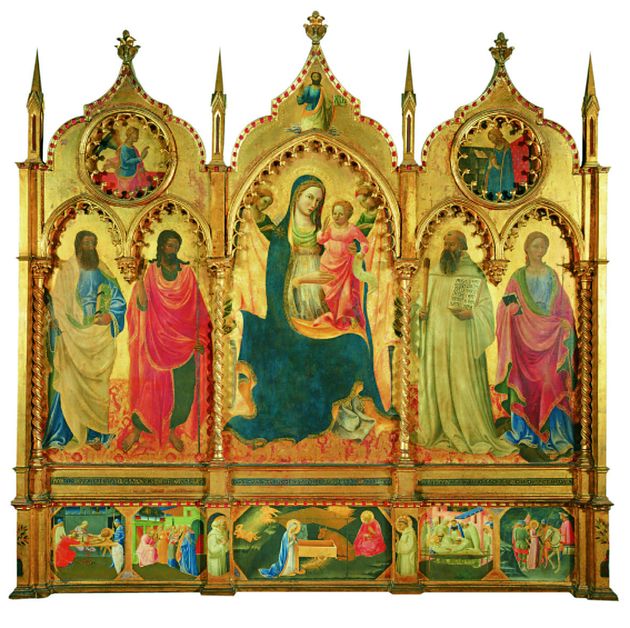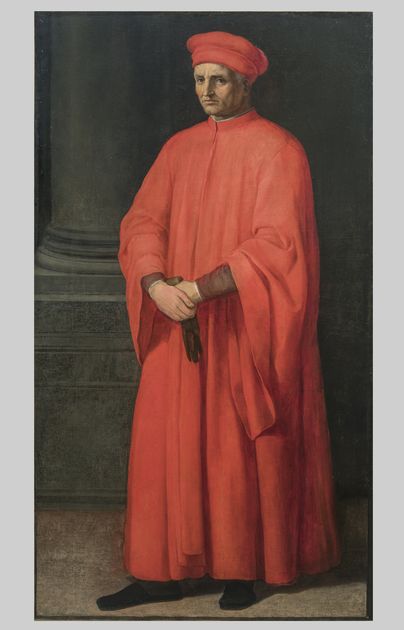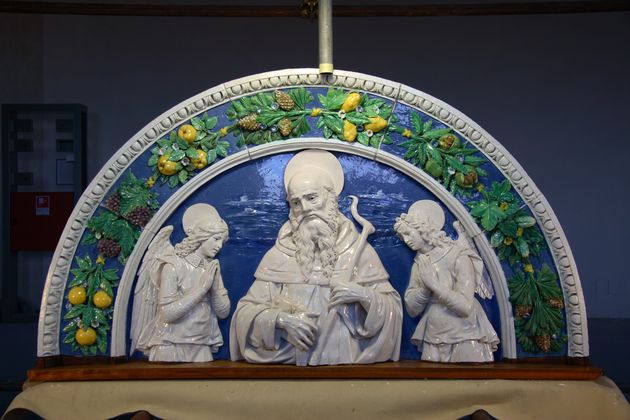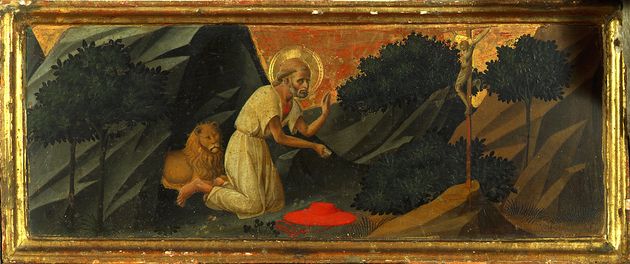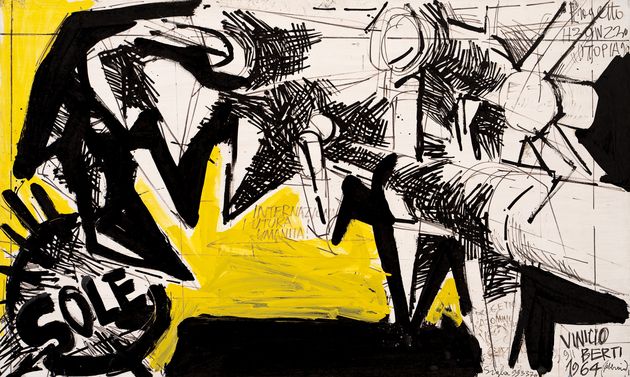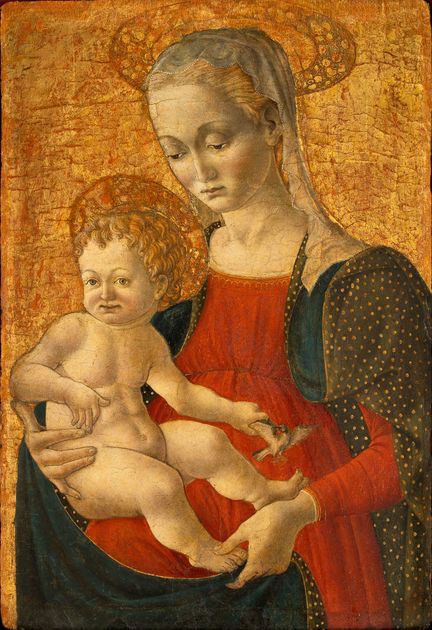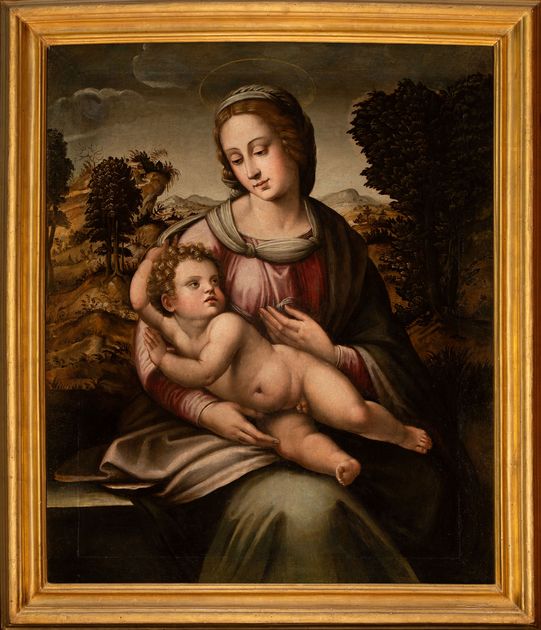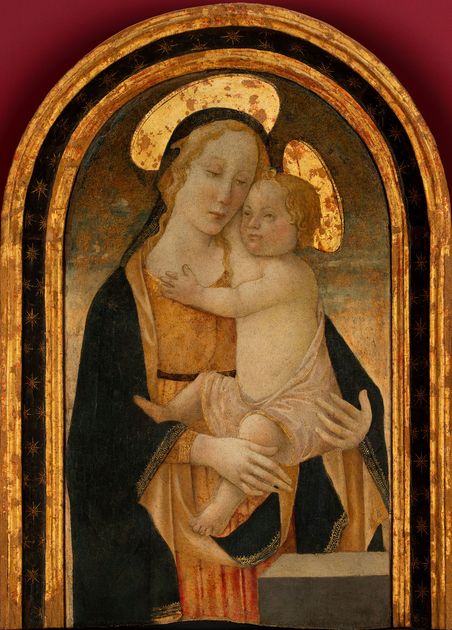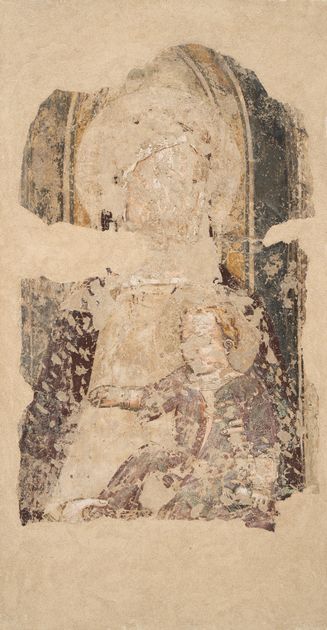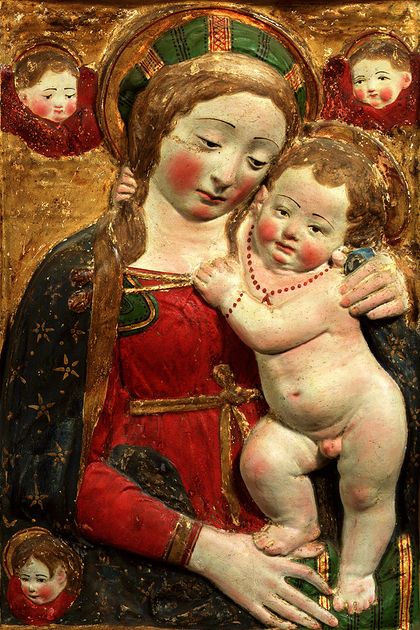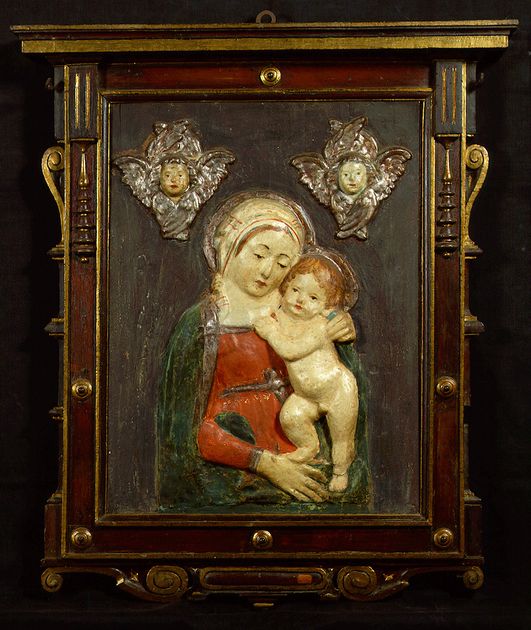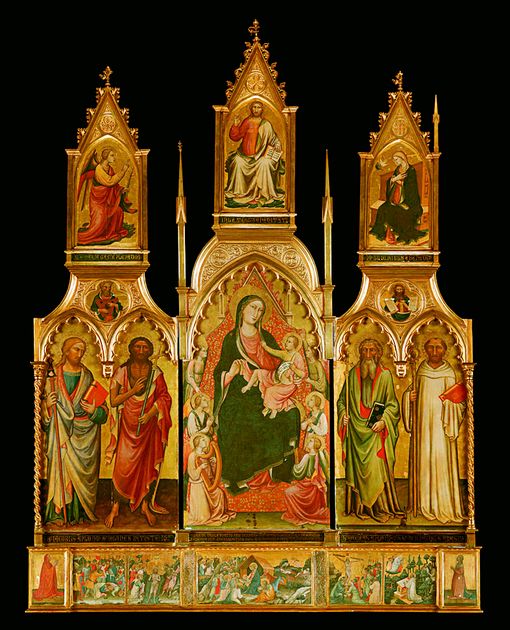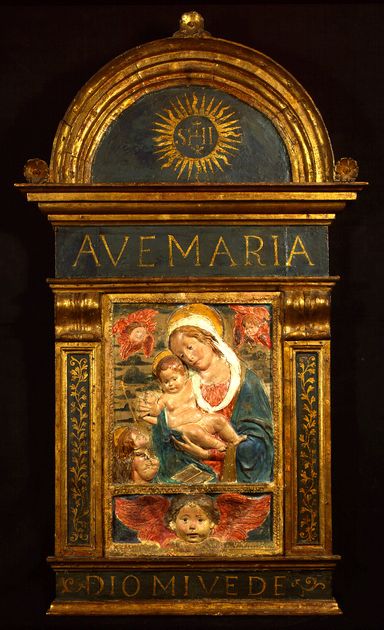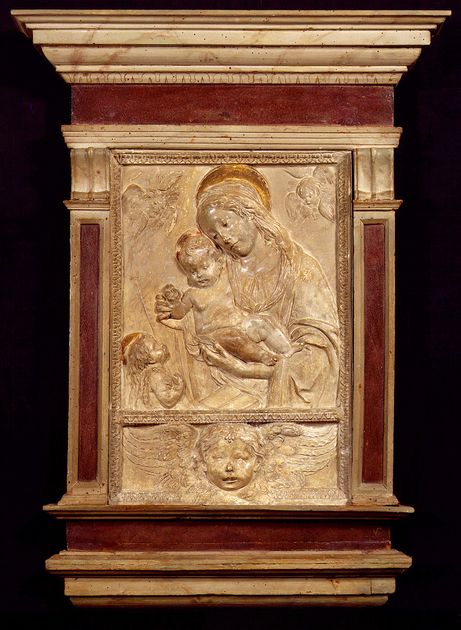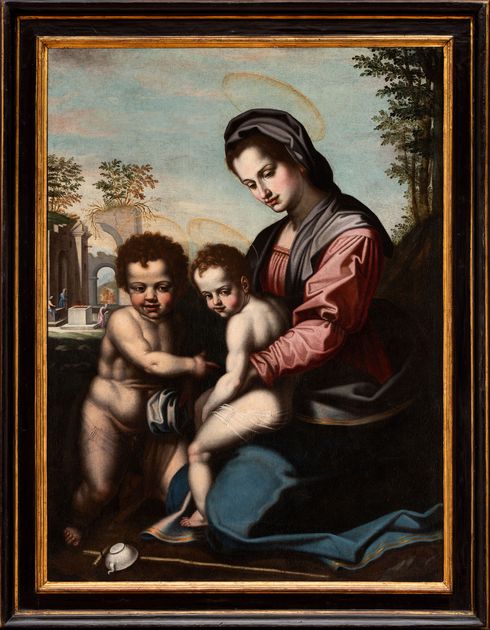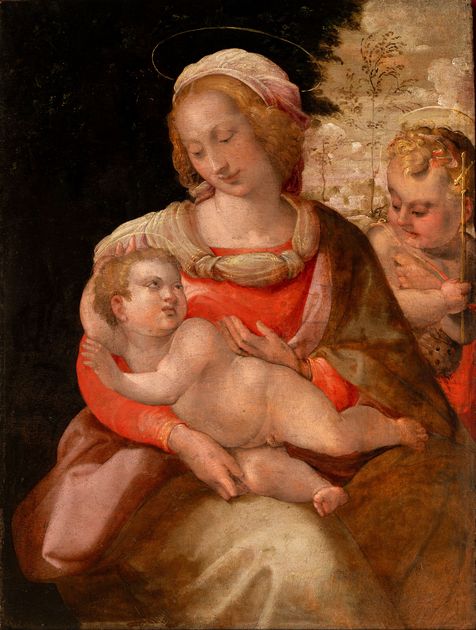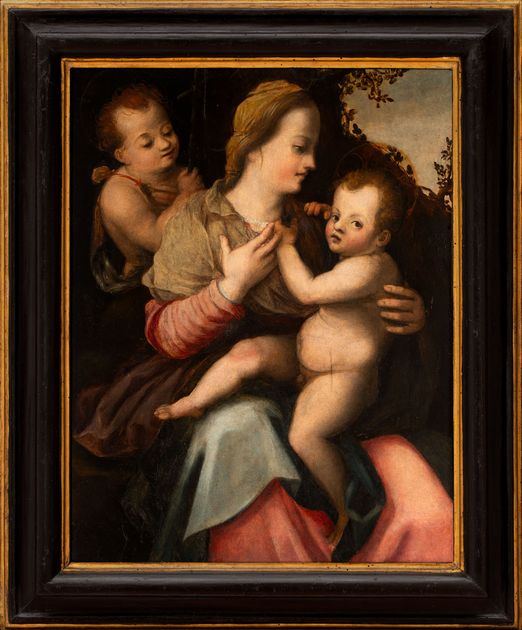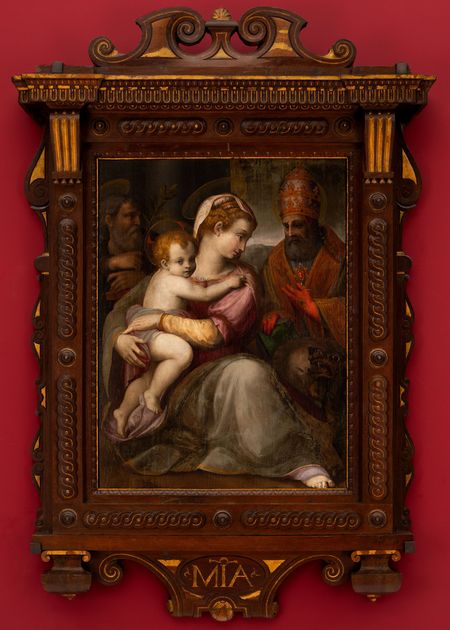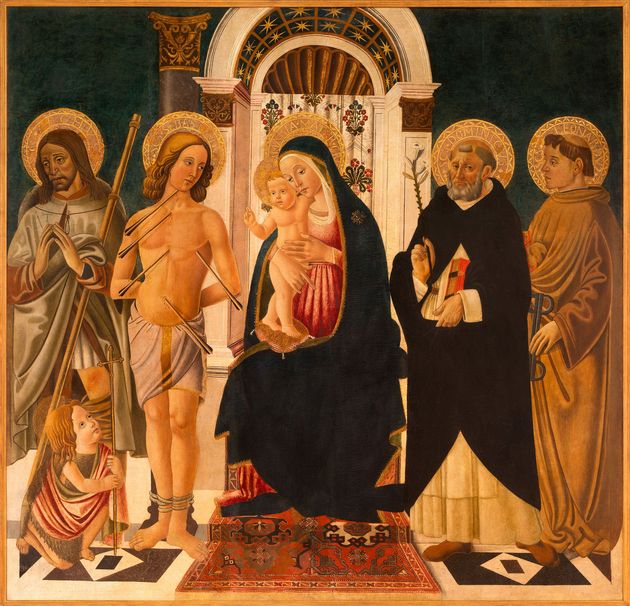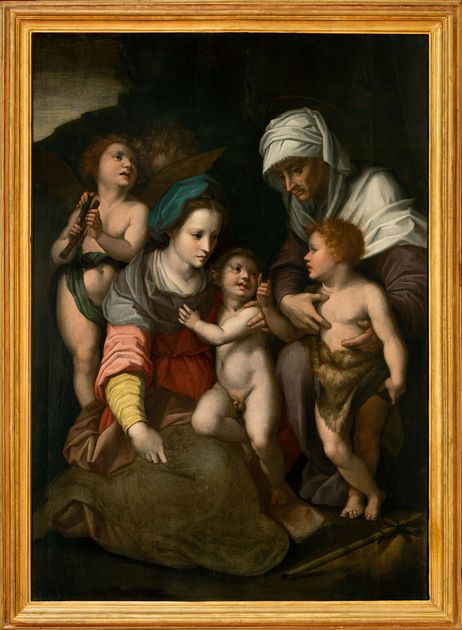Bernardo Daddi was only briefly mentioned by Vasari, but was quite famous in Florence, where he obtained important commissions until the tragic “black plague” of 1348, in which he died. In his Trecentonovelle (Three hundred stories), Franco Sacchetti (1332-1400) cites him as one of the major artists “from Giotto onwards” (No. CXXXVI).
The Prato polytptych was painted around 1332-1334 in the artist’s late career, for the women’s infirmary, a ward of the ancient hospital Spedale della Misericordia, where it embellished the altar. From the beds along the walls of the ward the patients could thus find comfort from their suffering in the Virgin and the saints, and also the hope of an afterlife, a precious echo of which was at least conveyed by the splendour of the work.
The figures show a solid Giotto-like plasticism; this is however softened by delicate colour schemes and refined decorations on the robes and gilded background, the latter being the symbol of a Paradise in which human sufferings and passions are soothed. In the centre of the polyptych a serene but pensive Virgin Mary holds the Son; He is clutching her veil, a reference to the shroud and to His destiny of passion and glory. A studied elegance also characterises the saints at their sides, who show no passion but rather an intimate peacefulness. Only Francis on the left has a more dynamic pose; his arms are crossed in emotional prayer and he is perhaps a reference to the donor of the work, Francesco di Tieri, the rector of the hospital Spedale della Misericordia from 1332 to 1373, who also commissioned the famous polyptych of Giovanni da Milano for the same pious institution. In the wake of this important commission, an imposing polyptych was commissioned from Bernardo Daddi a few years later for the Pieve (parish church, later Cathedral) of Santo Stefano. The surviving predella of this polyptych, with Stories of the Holy Belt, is also in this museum.

